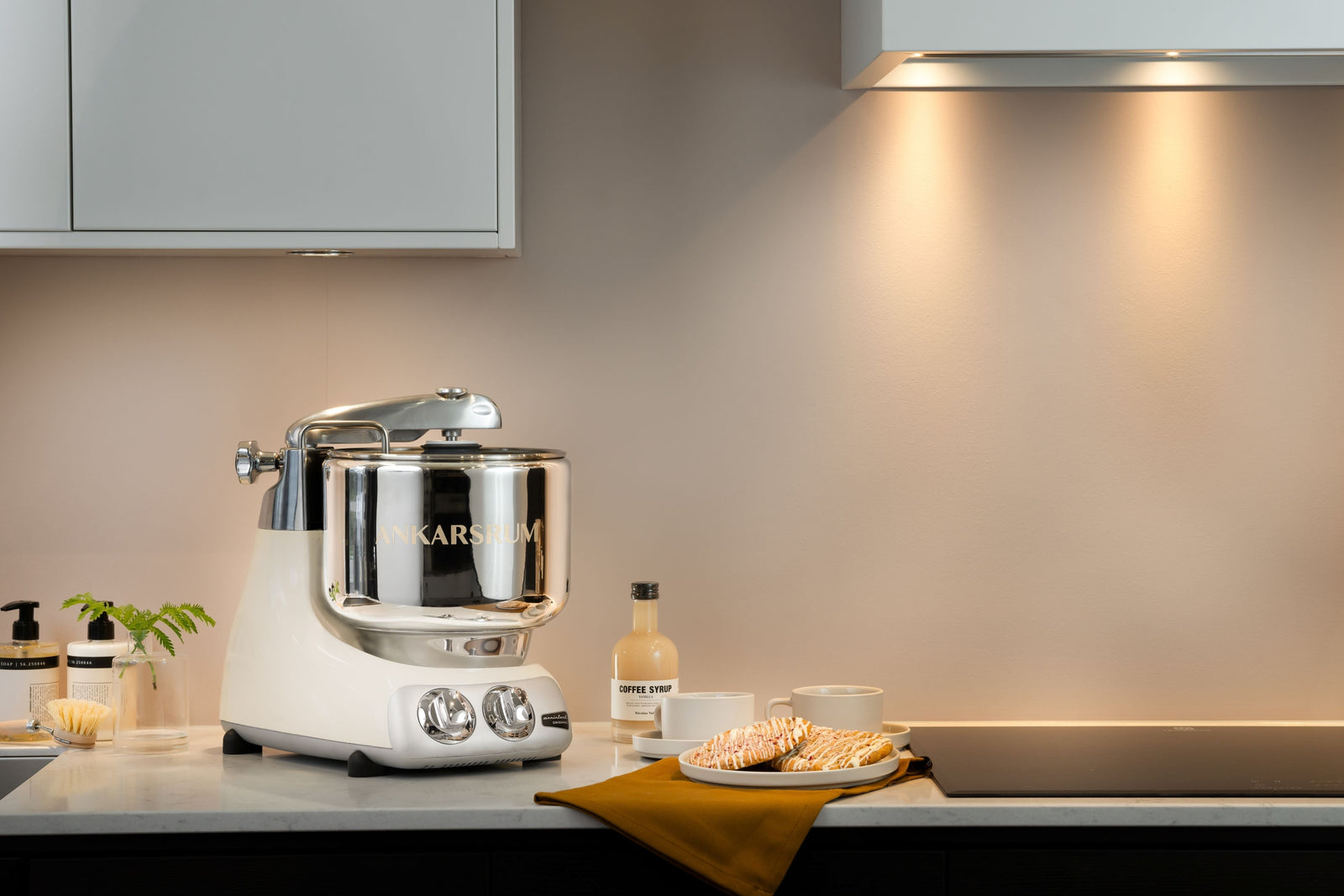If you’re in the market for a stand mixer that can handle everything from delicate batters to heavy bread dough, you’ve likely come across two European powerhouses: Ankarsrum and Bosch. While both brands offer impressive performance and durability, they take very different approaches to mixing.
In this comparison, we’ll look at how the Ankarsrum Assistent Original stacks up against the Bosch Universal Plus, helping you decide which mixer best fits your kitchen needs.
Design & Build Quality
Ankarsrum Assistent Original:
Crafted in Sweden, the Ankarsrum features a minimalist, industrial-chic design with a rotating bowl and stationary attachments. Its body is made of metal, giving it a durable, premium feel.
Bosch Universal Plus:
Made in Germany, the Bosch Universal Plus has a plastic exterior and more utilitarian design. While lighter and less bulky, it doesn’t quite match the Ankarsrum’s solid metal build.
🧁 Verdict: Ankarsrum wins on aesthetics and durability, but Bosch’s compact design appeals to space-conscious users.
Mixing Mechanism
Ankarsrum:
Uses a rotating bowl with stationary mixing arms, which provides excellent kneading action and allows for open-bowl access while mixing.
Bosch:
Employs dual beaters that spin in a stationary bowl with a center column. This setup handles light and medium doughs well but can be tricky to scrape around the middle.
🧁 Verdict: Ankarsrum’s design is better for heavy dough and provides easier ingredient access during mixing.
Motor & Power
Ankarsrum:
Equipped with a 600-watt motor that powers through up to 11 lbs of dough with ease. It’s built to handle frequent, heavy-duty baking without overheating.
Bosch:
Boasts an 800-watt motor, which may sound more powerful, but its torque and gear-driven design are better suited for medium tasks. It performs well but tends to strain with denser doughs.
🧁 Verdict: Don’t let wattage fool you—Ankarsrum’s torque and performance in bread-making are superior.
Capacity
Ankarsrum:
Features a 7.4-quart stainless steel bowl—ideal for large batches of dough, cookies, or batter.
Bosch:
Comes with a 6.5-quart plastic bowl, which is slightly smaller and made of less durable materials.
🧁 Verdict: Ankarsrum offers more capacity and a sturdier bowl for long-term use.
Included Attachments
Ankarsrum:
Includes a dough roller, dough scraper, dough hook, whisk, beater, and more. Optional add-ons expand its use to pasta-making, blending, grinding, and shredding.
Bosch:
Also comes with multiple attachments, and you can purchase extras like slicers, graters, and meat grinders. However, its lineup is not quite as extensive or premium in feel.
🧁 Verdict: Both are versatile, but Ankarsrum leans more toward professional-grade functionality.
Ease of Use & Cleaning
Ankarsrum:
Has a slight learning curve due to its unconventional design, but its open-top mixing makes adding ingredients and cleaning easier.
Bosch:
Intuitive for beginners and light users. However, its central column and plastic parts can make cleanup more cumbersome over time.
🧁 Verdict: Bosch is easier out of the box, while Ankarsrum rewards those who take time to learn.
Price Point
Ankarsrum:
Sits at the higher end of the stand mixer market. It’s an investment—but built to last decades.
Bosch:
More affordable upfront and still a strong performer for casual bakers or smaller families.
🧁 Verdict: Bosch is budget-friendly, but Ankarsrum offers better long-term value.
Final Thoughts
Choose Ankarsrum if...
- You bake bread often and in large quantities
- You value durability and professional-grade performance
- You want an appliance that lasts for years—even decades
Choose Bosch if...
- You’re looking for an affordable, compact mixer for light to medium use
- You’re new to stand mixers and want something beginner-friendly
- You want solid performance without the premium price tag
Both the Ankarsrum and Bosch are high-quality mixers with loyal fanbases—it all comes down to what you need most in your kitchen.

